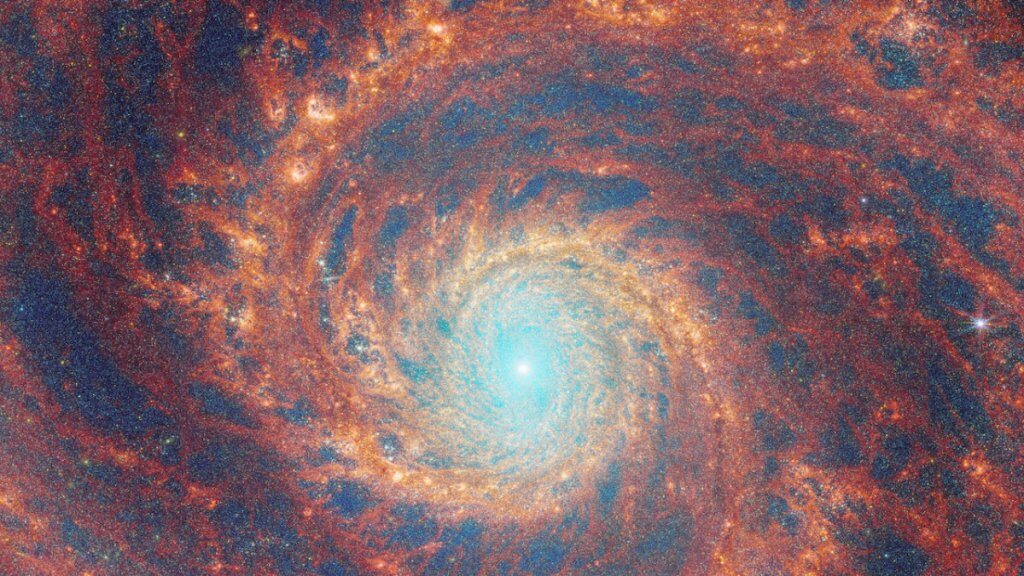
Webb captures the arresting beauty of a perfect spiral galaxy (Image Credit: Mashable)
Lying within the boundaries of the Hunting Dogs constellation, the galaxy sometimes appears faint and fuzzy, depending on the instrument used to view it. But with the power of the James Webb Space Telescope, run collaboratively by NASA and the European and Canadian space agencies, it’s easy to appreciate its long, elegant strands of stars, gas, and dust.
Webb recently snapped new images of M51, aka the Whirlpool Galaxy, for the so-called “Feast” project, a wonky nickname that shouldn’t qualify as an acronym by anyone’s measure because it stands for Feedback in Emerging Extragalactic Star Clusters. Through this research, scientists are trying to better understand how stellar feedback — the flood of star energy — influences star nurseries in galaxies beyond the Milky Way.
In this image, a composite of data from two Webb cameras, stellar feedback seems to have a dramatic impact on the galaxy, creating a network of bright knots among black bubbles. Dark red highlights dust, and orange and yellow trace gas.
Stellar feedback is a “crucial process in determining the rates at which stars form,” according to the European Space Agency. “Understanding stellar feedback is vital to building accurate universal models of star formation.”
M51 is a superb candidate to study because those port de bras arms are star-making factories, squeezing hydrogen gas to form clusters of new stars. It is among a rare, elite cohort — perhaps one in 10 spiral galaxies — known as the “grand design” type. This godly description, coined in the 1960s, refers to its perfect architecture.

This view of the Whirlpool Galaxy was captured by Webb’s Near-Infrared Camera.
Credit: ESA / NASA / CSA
This view of the Whirlpool Galaxy was captured by Webb’s Mid-Infrared Instrument.
Credit: ESA / NASA / CSA
Some astronomers believe the galaxy’s tentacles are clearly defined because of a nearby dwarf galaxy’s gravitational influence. Previous Hubble Space Telescope observations found that the companion galaxy, NGC 5195, has been gliding past it for hundreds of millions of years, according to NASA. The cosmic neighbor seems to be tugging on one of M51’s arms, triggering new stars to form.
“Webb is opening a new window into the early stages of star formation and stellar light.”
Want more science and tech news delivered straight to your inbox? Sign up for Mashable’s Light Speed newsletter today.
Before Webb opened for business, other telescopes, such as the Atacama Large Millimeter Array in Chile and Hubble, have revealed star formation either at the beginning of the process, tracing the compressed gas and dust clouds where stars will emerge, or after the stars’ energy has already destroyed their gas and dust nests.
“Webb is opening a new window into the early stages of star formation and stellar light, as well as the energy reprocessing of gas and dust,” according to ESA.
With the new observatory, scientists are now for the first time seeing star clusters along with the clouds they come from. Researchers will also be able to measure how long it takes for these stars to destroy the clouds with newly formed metals.
By studying the process, scientists think they’ll be able to better understand the timetable for planets to form: Once the dust and gas clouds are cleared away, there is no more material left to form planets.
Topics
NASA





